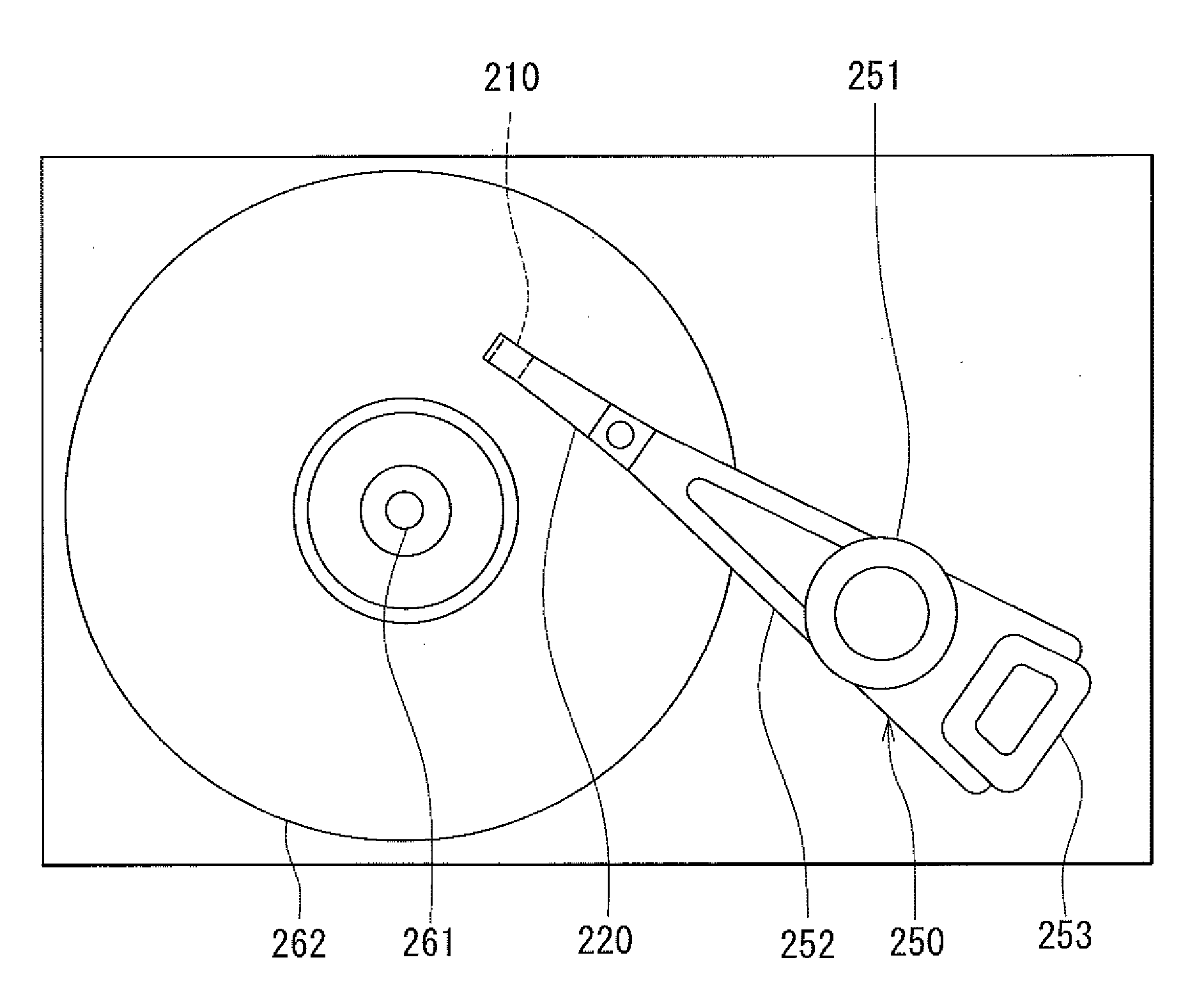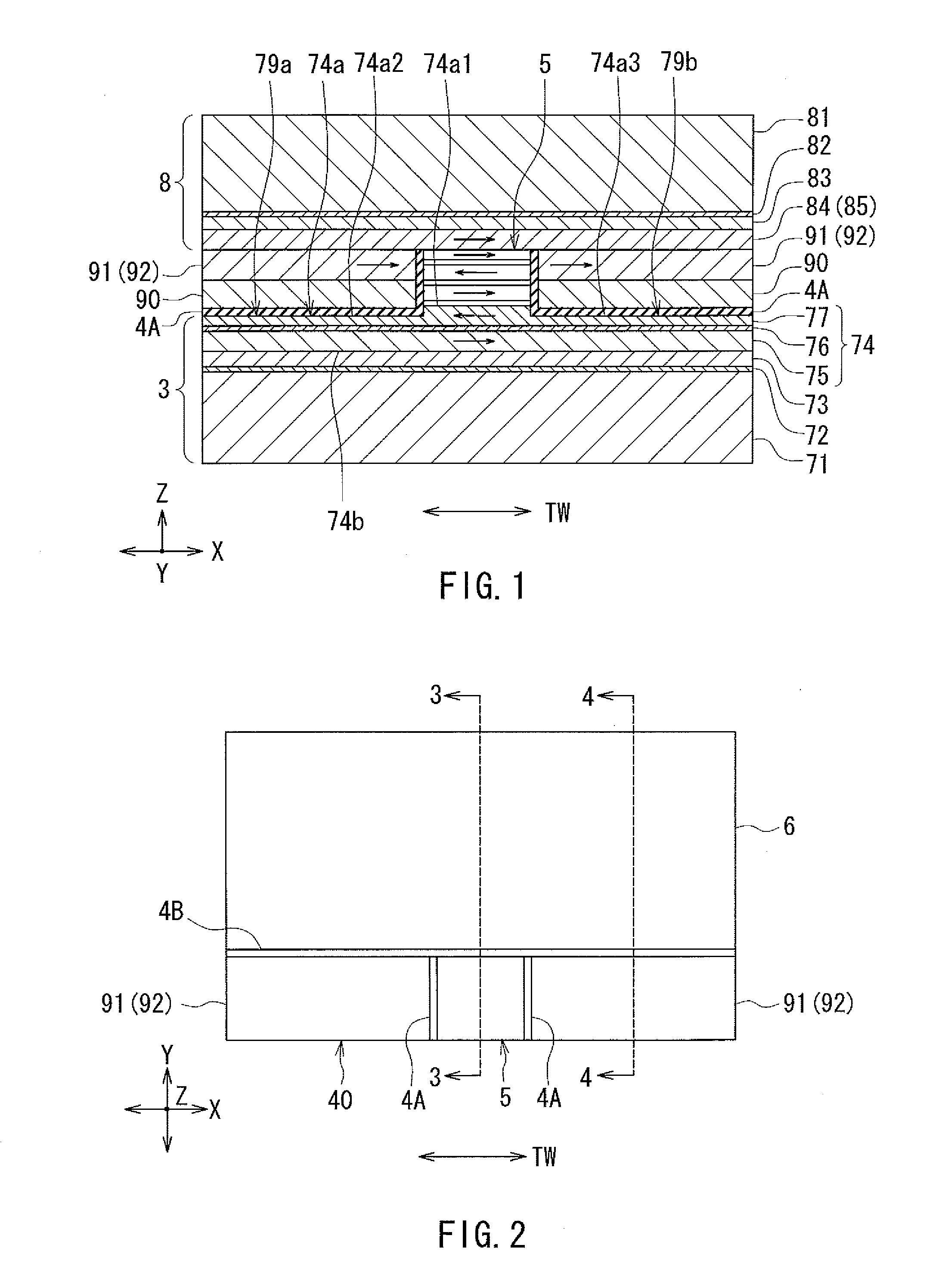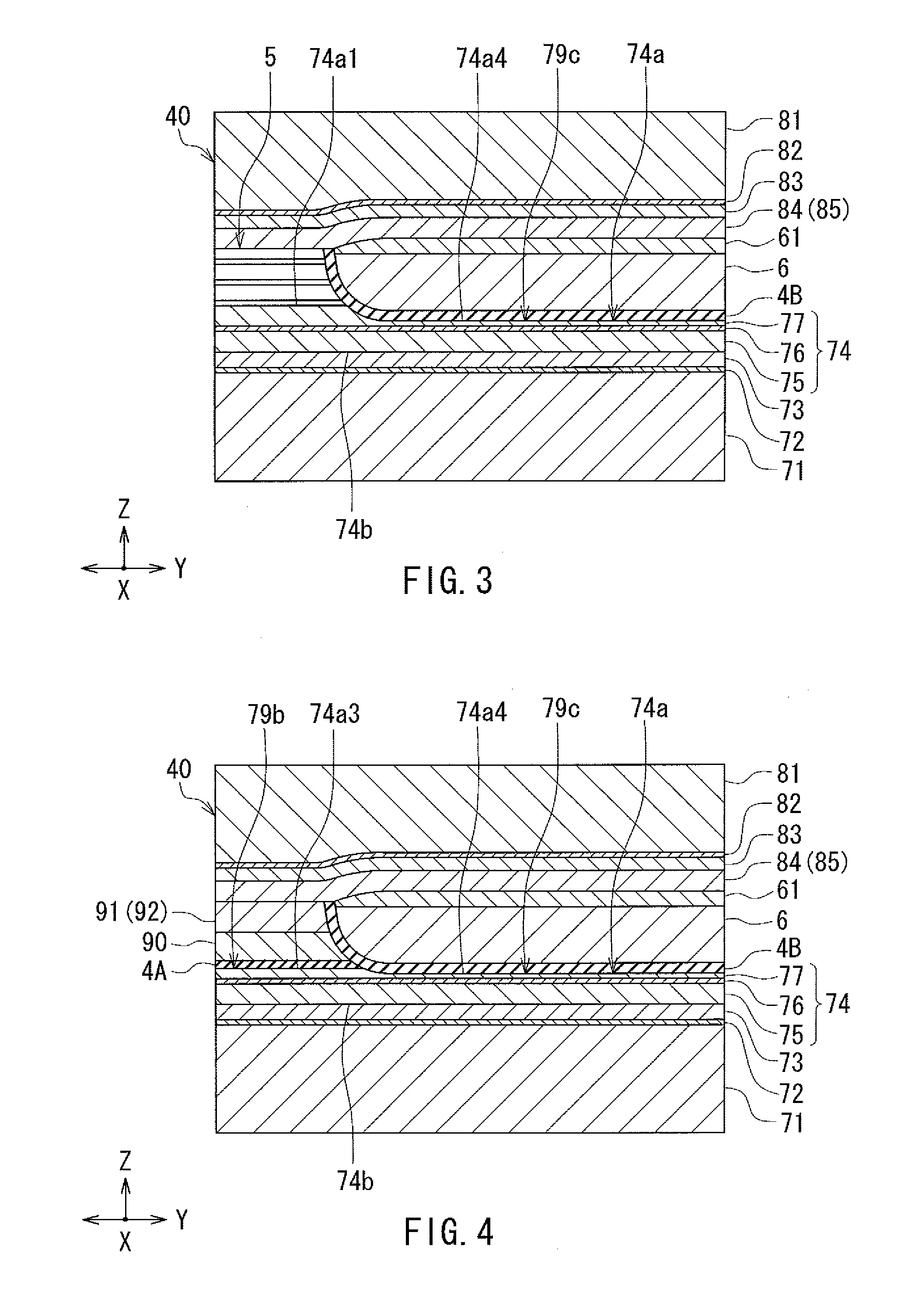Magnetoresistive element having a pair of side shields
a magnetic element and side shield technology, applied in the field of magnetic elements, can solve the problems of limiting the material and thickness, limiting the reduction of the dimension of the mr stack in the track width direction, and limiting the reliability of making the parallel track width direction parallel, so as to improve the function of the side shield
- Summary
- Abstract
- Description
- Claims
- Application Information
AI Technical Summary
Benefits of technology
Problems solved by technology
Method used
Image
Examples
first embodiment
[0060]Embodiment of the present invention will now be described in detail with reference to the drawings. First, with reference to FIG. 11, a description will be given of a slider 210 including a thin-film magnetic head (hereinafter, simply referred to as a magnetic head) according to a first embodiment of the invention. The magnetic head according to the present embodiment is for use in perpendicular magnetic recording. In a magnetic recording device, the slider 210 is disposed to face a circular-plate-shaped recording medium (a magnetic disk) that is driven to rotate. The recording medium has a plurality of tracks that are arranged concentrically. The tracks are the areas where magnetic signals are to be written. In FIG. 11, the X direction is a direction across the tracks of the recording medium. The Y direction is a direction perpendicular to the surface of the recording medium. The Z direction is the direction of travel of the recording medium as seen from the slider 210, and i...
second embodiment
[0167]A second embodiment of the invention will now be described with reference to FIG. 19. FIG. 19 is a cross-sectional view showing a cross section of the MR element according to the present embodiment parallel to the medium facing surface. The MR element according to the present embodiment has a pair of side shields 191 instead of the pair of side shields 91 of the first embodiment. The pair of side shields 191 are disposed on opposite sides of the MR stack 5 in the track width direction TW, between the first main shield portion 3 and the second main shield portion 8.
[0168]Each of the pair of side shields 191 includes a side shield middle layer 193 made of a nonmagnetic conductive material, and first and second side shield magnetic layers 192 and 194 that are antiferromagnetically exchange-coupled to each other via the side shield middle layer 193. The first side shield magnetic layer 192, the side shield middle layer 193, and the second side shield magnetic layer 194 are stacked...
third embodiment
[0211]A third embodiment of the invention will now be described with reference to FIG. 24. FIG. 24 is a cross-sectional view showing a cross section of the MR element according to the present embodiment parallel to the medium facing surface. The MR element according to the present embodiment has a pair of side shields 390, a pair of nonmagnetic layers 392, and a pair of insulating layers 393, instead of the pair of nonmagnetic layers 90 and the pair of side shields 91 of the first embodiment.
[0212]The pair of side shields 390 are disposed on opposite sides of the MR stack 5 in the track width direction TW. In the present embodiment, the pair of insulating layers 4A respectively have openings for exposing part of the top surface of the first exchange coupling shield layer 74 (ferromagnetic layer 77). The pair of side shields 390 respectively have shield-coupling magnetic layers 391 that are in contact with and magnetically coupled to the ferromagnetic layer 77 of the first exchange c...
PUM
| Property | Measurement | Unit |
|---|---|---|
| distance | aaaaa | aaaaa |
| distance | aaaaa | aaaaa |
| distance | aaaaa | aaaaa |
Abstract
Description
Claims
Application Information
 Login to View More
Login to View More - R&D
- Intellectual Property
- Life Sciences
- Materials
- Tech Scout
- Unparalleled Data Quality
- Higher Quality Content
- 60% Fewer Hallucinations
Browse by: Latest US Patents, China's latest patents, Technical Efficacy Thesaurus, Application Domain, Technology Topic, Popular Technical Reports.
© 2025 PatSnap. All rights reserved.Legal|Privacy policy|Modern Slavery Act Transparency Statement|Sitemap|About US| Contact US: help@patsnap.com



